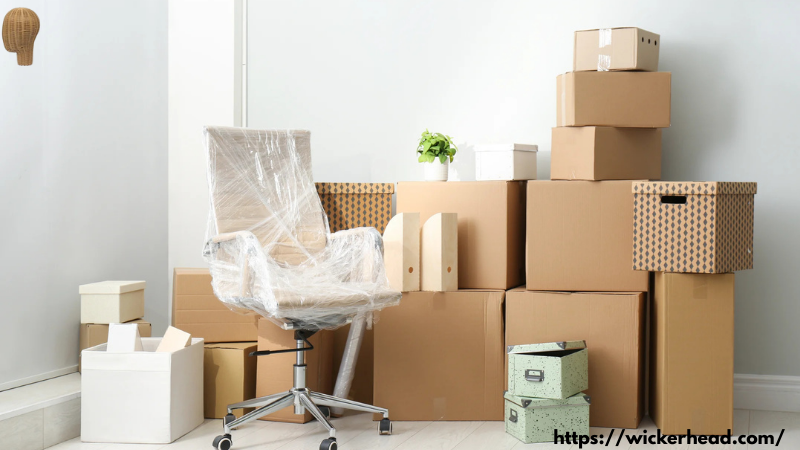How to Pack Furniture for Climate-Controlled Storage? When you need to store furniture for weeks, months, or even years, proper packing for climate-controlled storage makes all the difference between finding your pieces in perfect condition versus discovering warped wood, musty fabrics, or pest damage. This comprehensive guide walks you through every step to ensure your furniture emerges from storage looking as good as the day you packed it.
Table of Contents
Why Climate-Controlled Storage Matters for Furniture
Climate-controlled storage units maintain consistent temperature (typically between 55-85°F) and humidity levels (30-50% relative humidity) year-round. This stability protects your furniture from:
- Wood warping and cracking that occurs with temperature fluctuations
- Upholstery mold and mildew from excess humidity
- Metal corrosion caused by moisture in the air
- Leather drying and cracking from low humidity
- Pest infestations that thrive in certain conditions
While climate control provides the foundation for protection, how you prepare and pack your furniture determines its ultimate condition when you retrieve it.
Step 1: Deep Cleaning – The Critical First Step
Many people underestimate how important thorough cleaning is before storage. Even invisible residues can attract pests or cause permanent damage over time.
Wood Furniture Cleaning:
- Remove all dust with a microfiber cloth
- Clean with a pH-balanced wood cleaner (avoid water)
- Apply a thin coat of high-quality furniture wax (not oil)
- Pay special attention to crevices where dirt accumulates
Upholstered Furniture Preparation:
- Vacuum every surface with upholstery attachments
- Spot clean any stains with appropriate cleaners
- Consider professional cleaning for valuable pieces
- Allow to dry completely (at least 48 hours)
Metal Components:
- Wipe down with a dry cloth
- Apply a thin coat of automotive wax to prevent oxidation
- Lubricate any moving parts
Step 2: Strategic Disassembly
Taking furniture apart serves multiple purposes: it prevents stress on joints during storage, makes items easier to move, and often allows for more efficient use of storage space.
What to Disassemble:
- Remove all drawers from dressers and cabinets
- Take apart bed frames and headboards
- Separate table leaves and legs
- Remove mirrors from dressers
- Detach any removable shelving
Organization Tips:
- Place all hardware in labeled ziplock bags
- Tape bags to the corresponding furniture piece
- Take photos of complex assemblies before disassembling
- Keep all parts of one piece together in storage
Step 3: Choosing the Right Packing Materials
Investing in proper packing materials is significantly cheaper than replacing damaged furniture. Here’s what you’ll need:
Essential Packing Supplies:
- Furniture blankets (quilted moving pads) for large pieces
- Acid-free tissue paper for wrapping delicate surfaces
- Bubble wrap for protecting corners and edges
- Plastic stretch wrap for securing loose parts
- Mattress bags (specifically designed for long-term storage)
- Mirror boxes or special picture/mirror packing materials
- Plywood or cardboard to protect flat surfaces
Materials to Avoid:
- Regular plastic bags (trap moisture)
- Newspaper (ink can transfer)
- Low-quality packing tape (can leave residue)
Step 4: Proper Wrapping Techniques
Different furniture types require different wrapping approaches:
Wood Furniture:
- Wrap in acid-free paper first
- Cover with furniture blankets
- Use bubble wrap on vulnerable corners
- Secure with stretch wrap (don’t overtighten)
Upholstered Items:
- Cover with breathable cotton sheets
- Use furniture socks for chair legs
- Place moisture absorbers inside
Mattresses:
- Use proper mattress bags (not plastic)
- Insert moisture absorbers
- Store vertically on long edge
Glass and Mirrors:
- Use special mirror boxes
- Mark “FRAGILE” clearly
- Store vertically, never flat

Step 5: Preparing the Storage Unit
How you arrange items in your climate-controlled unit affects their preservation:
Space Planning:
- Create aisles for air circulation
- Place heaviest items on the bottom
- Keep furniture off concrete floors (use pallets)
- Allow space between walls and furniture
Climate Control Tips:
- Place a hygrometer in unit to monitor humidity
- Use moisture absorbers throughout
- Consider a small fan for air circulation
Pest Prevention:
- Use natural deterrents like cedar blocks
- Avoid storing food items nearby
- Inspect regularly for signs of pests
Long-Term Storage Maintenance
For storage exceeding 6 months:
- Plan bi-annual inspections
- Replace moisture absorbers as needed
- Rotate items if possible to even out weight distribution
- Check for any climate control system issues
FAQs
1. How much more does climate-controlled storage cost?
Typically 25-50% more than regular units, but worth it for valuable furniture.
2. Can I use regular storage if I pack really well?
For short periods (under 3 months) with proper packing, maybe. For longer, climate control is essential.
3. Should I remove cushions from sofas before storage?
Yes, store them separately wrapped in breathable covers to maintain shape.
4. How do I protect wood furniture from drying out?
Proper waxing before storage and maintaining 30-50% humidity prevents drying.
5. Is it worth storing inexpensive furniture?
Consider storage costs vs. replacement value. For quality pieces, proper storage preserves your investment.

Final Thoughts
Properly packing furniture for climate-controlled storage requires time and effort, but it’s the only way to ensure your pieces remain in excellent condition. By following these detailed steps – from thorough cleaning to strategic packing to proper unit preparation – you’ll protect your furniture from humidity, temperature changes, pests, and other storage hazards.
For furniture that doesn’t require long-term storage, explore space-saving solutions at Wickerhead. Their collection offers innovative pieces perfect for making the most of your living space.
Remember, the key to successful furniture storage lies in the preparation. Taking these precautions will give you peace of mind knowing your furniture is safely preserved until you need it again. For more expert storage advice, consult the Self Storage Association’s comprehensive guidelines on furniture preservation techniques.
